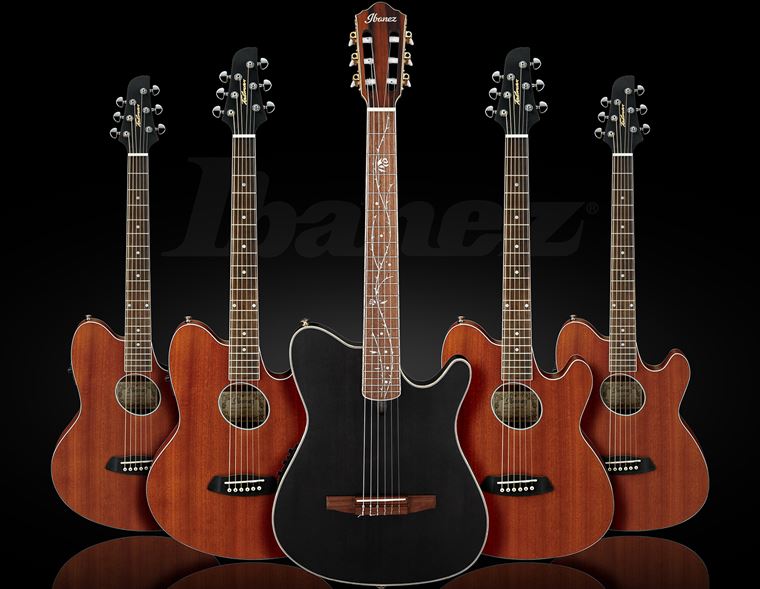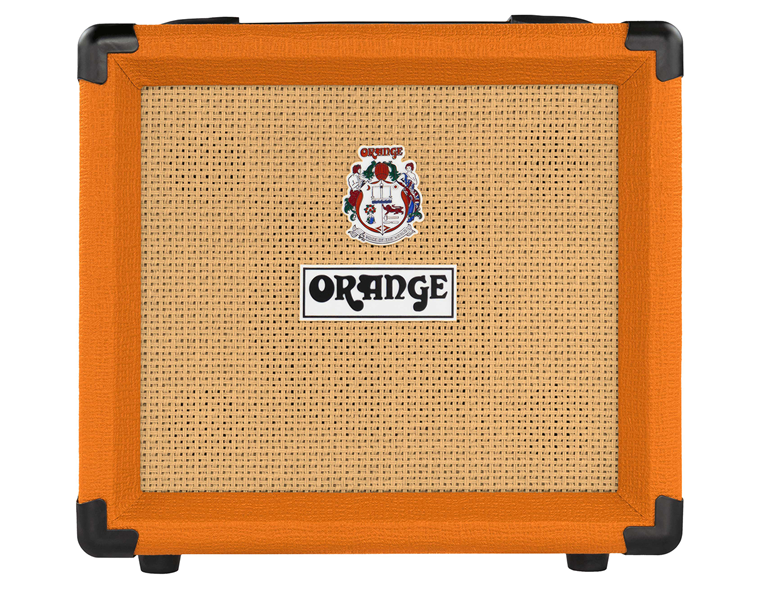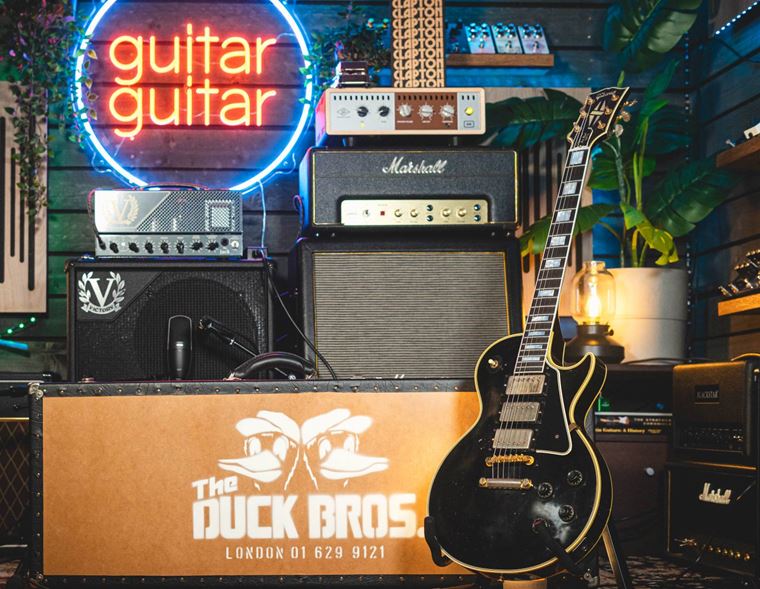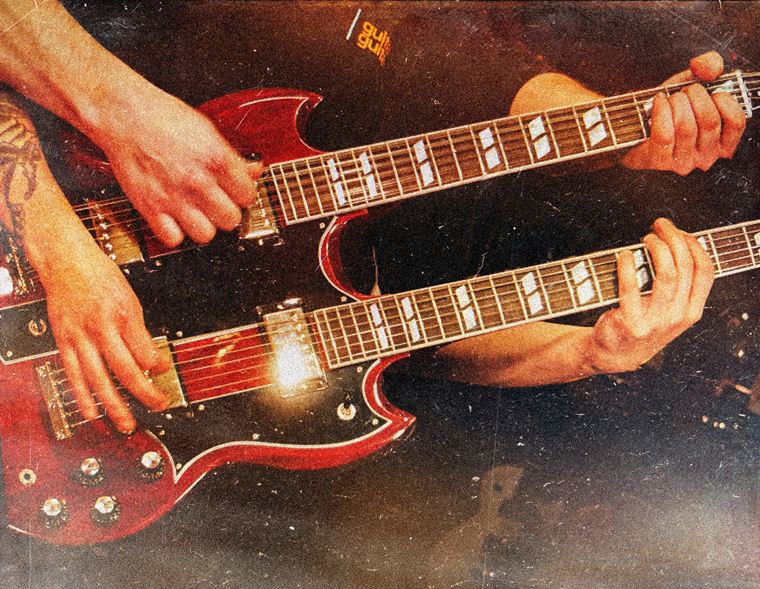Are Epiphone Guitars Good for Beginners?
Published on 20 September 2023
Are Epiphone guitars good for beginners? This is a question we get asked a lot at guitarguitar. Epiphone are a perennially popular brand for all types of guitarists, but are they a good choice for starting out?
That’s what we aim to answer today! We’ll explain the brand, we’ll tell you what makes them a good choice for the fledgling guitar player, and we’ll introduce you to the models we think are the best choices for you to start out on.
Rather than being a comprehensive guide to Epiphone’s vast range of instruments, today’s blog will focus only on models that are particularly effective for beginners. If that sounds like you, then why not pop the kettle on and take five minutes with us?
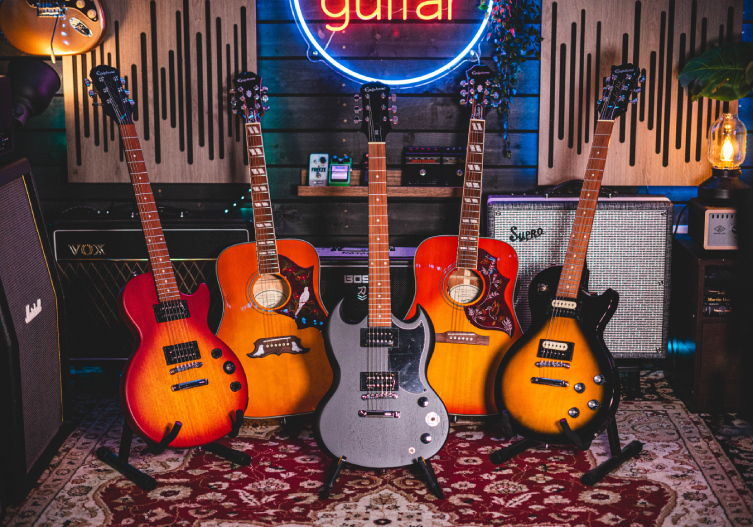
Contents
- Epiphone Guitars
- Why are Epiphone Guitars Good for Beginners?
- Les Paul for Beginners
- SG for Beginners
- Thunderbird Bass for Beginners
- Dove and Hummingbird for Beginners
- EJ200SCE For Beginners
- Best Epiphone Guitars for Beginners
- Epiphone for Beginners
Epiphone Guitars
Epiphone are a famous guitar brand, and they have a long and storied history. We won’t dive too deep here, but we will say that Epiphone is well over a century old, and originally hailed from New York City. Started out by a Greek immigrant family, Epiphone was named after Epi Stathopoulos, the son of a mandolin builder and the real motivating force behind the brand (Epiphone - ‘epi-phone’ - literally translates as ‘Epi’s sound’).
Epiphone were a major force in the roaring jazz age of pre-world war 2 music, but rivals Gibson ultimately won the battle, buying the Epiphone brand in 1962. Nowadays, they are mainly known for their status as ‘official’ Gibson replicas, but they make their own designs too. Epiphones have been seen in the hands of The Beatles, Radiohead and Gary Clarke Jnr, so their quality is well-regarded.
Epiphone guitars range from very affordable to reasonably expensive (top end models cost well over £1000 these days), but their reputation for value is present across all models. That’s important for us, since today we’ll be looking at guitars and basses that are mostly from the very affordable student/beginner end of the market.
We’ll choose models that harken to famous designs such as the Les Paul, the SG and the Thunderbird, all the while explaining what makes these good for beginners.
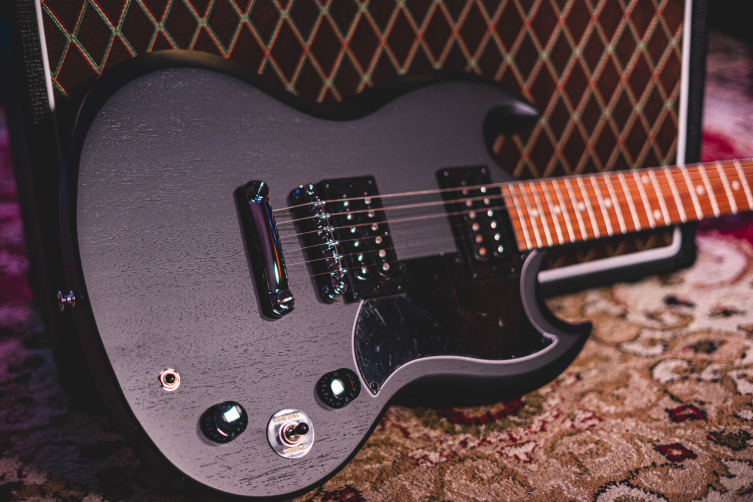
Why are Epiphone Guitars Good for Beginners?
Epiphone guitars are particularly good to learn on. Why? Well, there are a few important reasons, and these are mainly to do with size, shape and feel. Without bogging you down with too much technical talk, a thing called ‘scale length’ is important.
Scale length refers to the amount of available string that’s ‘playable’ on a guitar. We measure from the nut (the part at the guitar’s head from which the string is then unplayable because it’s being wound around the tuning peg) to the bridge. This distance is the scale length, so it’ll be longer for basses and shorter for guitars.
Epiphone guitars are, as we said, a sister-brand to Gibson, whose world-famous guitar designs are some of the most influential ever. Part of their overall design style involves using a scale length that measures 24.75”. This is a little shorter than the standard scale length of 25.5”, which was decided on by Fender in the 1950s and utilised by almost every brand in the world that doesn’t copy the Gibson style. Although there’s only three quarters of an inch between the two scale lengths, it actually makes quite an obvious difference in feel to guitarists. The Epiphone scale length feels ‘slinkier’, chords are easier to hold down and strings are easier to bend, which is part of how we play solos. In other words, the Epiphone scale length makes the act of playing itself far easier, which is great news for beginners!
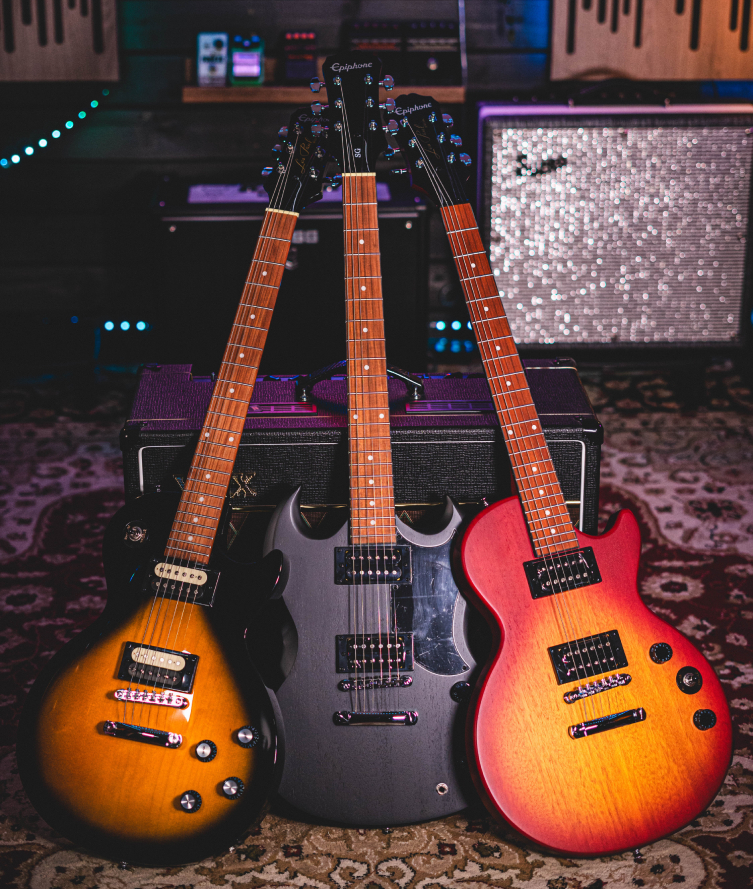
On top of that, Epiphone guitars have ever so slightly wider fingerboards. We’re talking about one millimetre of a difference here, but again, it’s something your hand can most definitely feel! That tiny increase (from roughly 42mm across the fingerboard’s width to 43mm) gives your fingers more space to form chords, again making things easier!
Lastly, Epiphone make very comfortable necks. The profile (the area around the back) is always a good, rounded C or D-shaped profile (or similar), and the fingerboard itself is slightly flatter than some other brands, making notes easier to get too. All in all, Epiphone provides a very comfortable and rewarding playing experience.
To recap, here are the reasons why Epiphone guitars work well for beginners:
- 24.75” scale length is slightly shorter for a slinky, easy feel
- Wider fingerboard makes forming chords easier
- Comfortable necks make things better for your hands
- Flatter fingerboard is more player-friendly
So, those features are relative to all Epiphone instruments (with different measurements for basses, of course!), so let us now look at some good beginner choices based on famous Gibson/Epiphone guitar and bass designs…
Les Paul for Beginners
The Les Paul is arguably Gibson’s most famous guitar design, and it’s certainly Epiphone’s most popular. For this reason, we’ll look at two great beginner Les Pauls, from Epiphone’s exhaustive catalogue.
First up is the Epiphone Les Paul Special Satin E1. Available in three satin finishes, this guitar takes the famous Les Paul outline and simplifies everything on board for a straightforward, streamlined beginner instrument. Instead of four controls, there are two (better to start with) and instead of an expensive glued in (or ‘set’) neck, we have a bolted on neck. This is more than acceptable for beginners, particularly given the fact that a huge amount of very expensive guitars still utilise the bolt-on method for joining the neck.
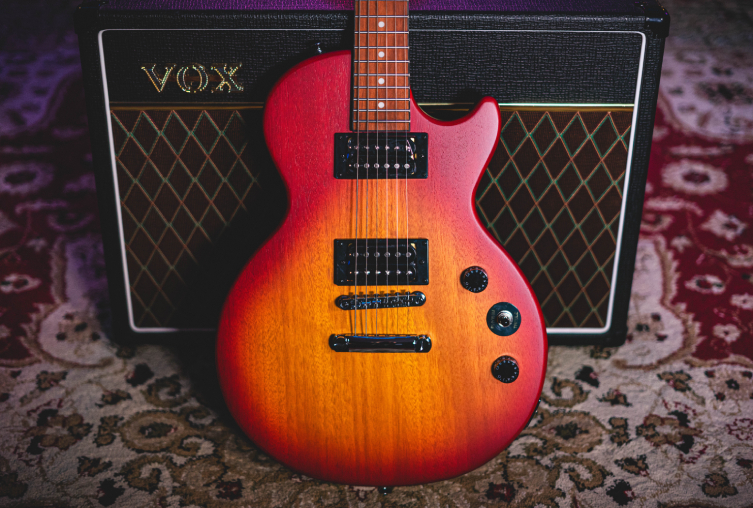
Two humbucking pickups deliver a good rock sound, and a three-way selector switch helps you choose your tone. There is a comfy D-profile neck to play on, and all of the benefits we mentioned earlier - scale length, fingerboard width/radius etc - are all in evidence here. This is a nice looking guitar with an appealing simplicity, and it’ll more than get you on your way to guitar god status! All you need to do is decide whether you prefer the Ebony, Heritage Cherry Sunburst or Tobacco Sunburst finish!
Another excellent choice from Epiphone is the Les Paul Studio E1. Superficially similar to the Special, this model is slightly dearer due to two factors. Firstly, this guitar is made with mahogany, a more costly timber but the same wood used with classic Gibson Les Pauls and famously good for creating thick, sustaining sounds. The body is slightly thicker and has a contoured top. Also, the Les Paul Studio guitars have gloss finishes, so if you want a ‘shiny’ guitar, this is the choice for you!
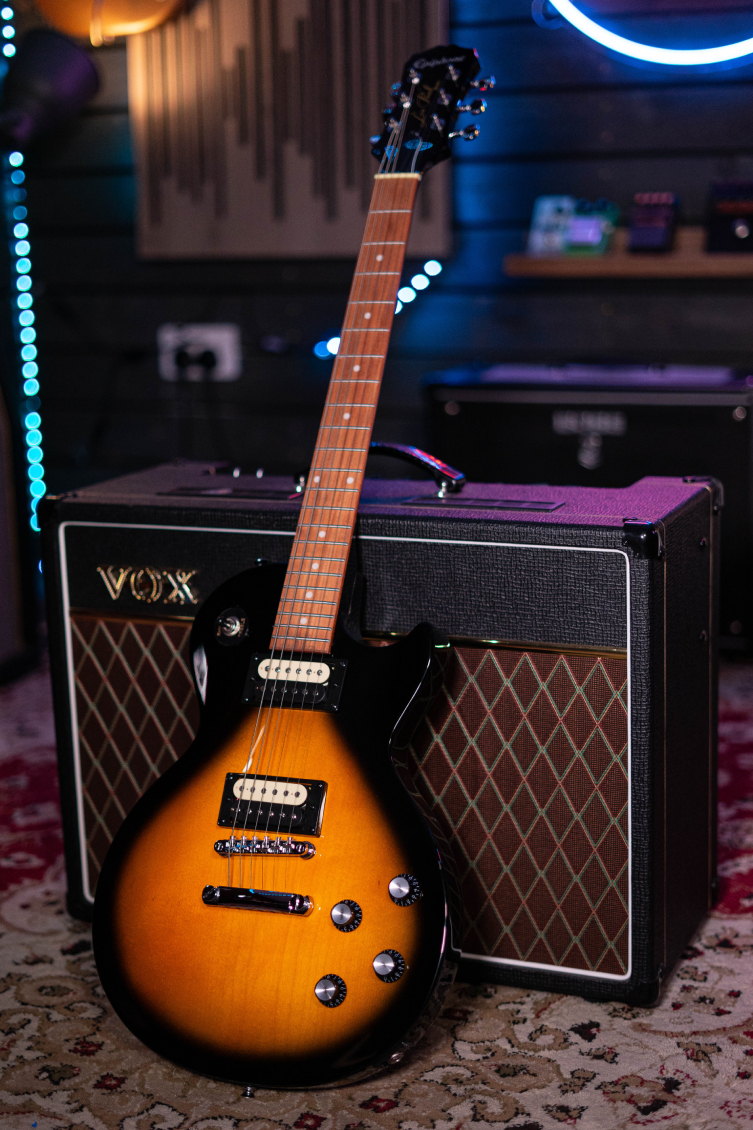
SG for Beginners
So, those were the Les Paul models, but SG guitars are also hugely popular. AC/DC and Black Sabbath will have had something to do with that, of course, but the SG’s ‘pointed horns’ rock look will always appeal to rebels.
So, Epiphone thankfully offers a good beginner SG in the form of the Epiphone SG Special. It’s the equivalent of the Les Paul Specials we’ve just looked at, with similar specifications regarding the neck, pickups and controls. Really, the main difference here is the shape itself. The SG is generally quite a light guitar (Les Pauls are known for being heavy, but these beginner models don’t share that issue) and the ‘devil horns’ allow you plenty of access to the upper frets. This is actually an advantage over the Les Paul, whose single cutaway body shape (the body is only ‘cut away’ as it were, at one side) makes high-register fretting a little more difficult.
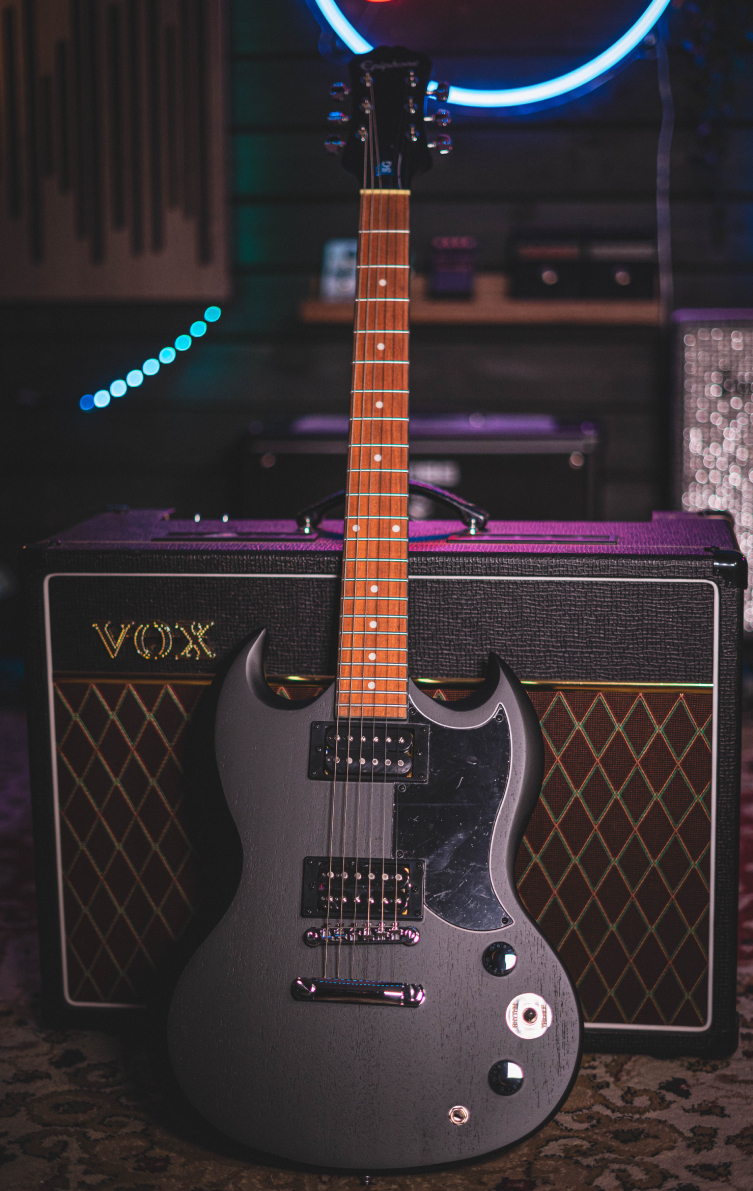
We love the iconic look of the SG, and this Epiphone take is a super-cool first guitar for any player who wants to rock!
Thunderbird Bass for Beginners
The Epiphone Thunderbird E1 is a very distinctive bass, full of attitude and worn (we’d normally say ‘played’ but you really have to ‘wear’ a bass this cool) by some of the suavest and most effortlessly charismatic players in the game. It’s a hard rock staple and works well for rock, punk, emo and pop styles.
The T-bird, as it is often referred, is a good example of a ‘neck-through’ bass. This means that the wood that makes the neck actually continues through the length of the body. Two ‘wings’ are glued to the sides to make up the body shape, but the neck has no discernible join. Through-necks are often constructed from multiple pieces of wood sandwiched together for added strength, and this Thunderbird conforms to that build style.

What this means for the beginning player is a very stable instrument with a comfortable feel. Its dual humbucking pickups supply a powerful sound that doesn't need any additional work to make sound good: you plug it in and go for it! Given its relatively large size, we’d not recommend this for smaller players (there are plenty of short scale basses that are equally attractive) but for those about to rock, this is a powerful choice that will give years of service.
Dove and Hummingbird for Beginners
The Epiphone Dove Studio and Hummingbird Studio are a pair of acoustic guitars that set you up to win. One of the biggest hurdles that fledgling guitarists face is in just picking up the instrument in the first place. It can be hard, when your skill levels aren’t quite at the stage of you being able to enjoy yourself when you play, so it takes more motivation to keep going.
We get it! And a big part of keeping that motivation lies in having an attractive looking guitar that makes you want to grab it for a play. Then, of course, it has to sound nice when you begin strumming or picking! Thankfully, the Epiphone Dove Studio and Hummingbird Studio each bring you solutions to both of these situations!
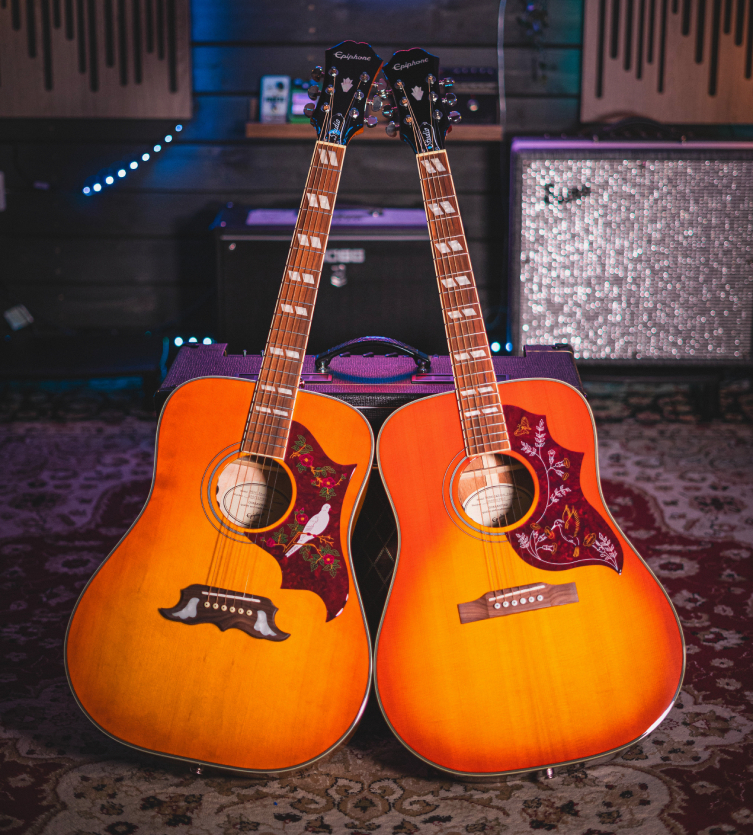
Indeed, these two are very classically beautiful guitars. Based on Gibson’s historic models, each Epiphone sports a wonderful ‘violin burst’ finish, the decorative pickguard (containing the titular bird of each model name) and some very appealing ‘split parallelogram’ inlays. Gold hardware completes the wow factor.
A dreadnought in size & style, both models have a versatile sound that’s equally suited to strummed chords and picked melodies. Dreadnoughts project well and are good for accompanying singers since their deep bodies can really fill a room with sound. The only discernible difference between the two models - apart from the decorative bird - is the use of layered maple for the back & sides of the Dove, and layered mahogany for the back & sides of the Hummingbird. Whilst these areas of an acoustic guitar as not as important as the top in terms of creating nice tones (more of that in a second), they still play a part in tone generation, and the differences here mean that the Hummingbird is ever so slightly warmer sounding, the Dove being a little brighter.
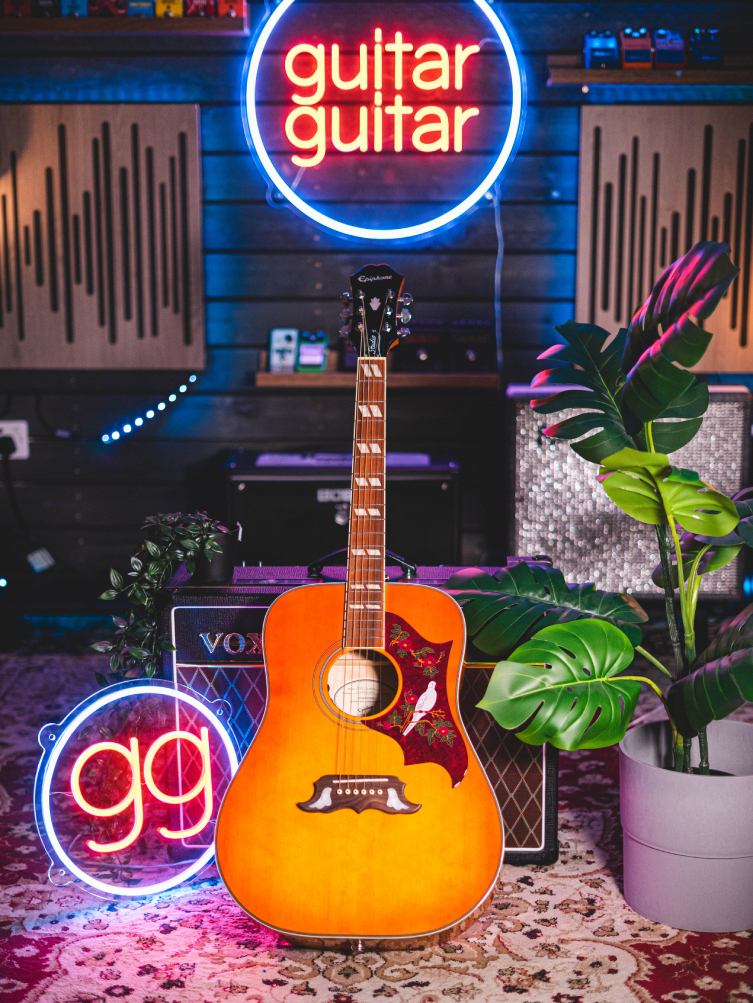
These Epiphone acoustics have two additional - and quite excellent - tricks up their sleeves, too. Firstly, the top (or ‘face’ of the guitar, if you prefer) is made with a solid piece of timber, rather than laminated plies. This improves the sound significantly, and will continue to do so as the wood ‘seasons’: the more you play it, the better it’ll sound, year after year.
The other bonus is the inclusion of a pickup system, which allows you to plug the guitar into an amp or PA system. This isn’t really anything that a beginner needs straight away, but it makes this either guitar a great ‘future proof’ purchase: there’s no need to upgrade as you progress in your skills, since this guitar will grow with you! It’s not just a pickup system, either: it’s a Fishman pickup system, and they are well known as one of the best brands for this type of technology. When it’s time for you to hit the stage and perform, these Epiphone acoustics have got your back.
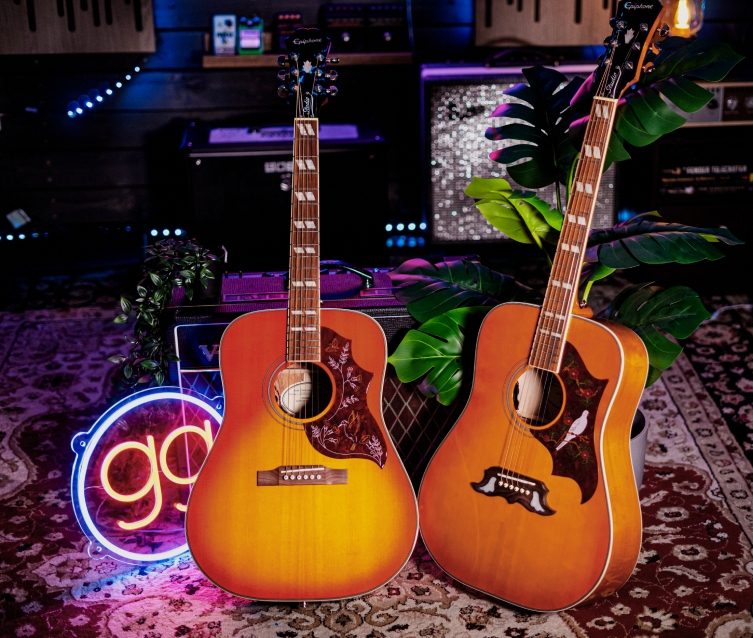
Remember we mentioned the intrinsic value of Epiphones, across the brand? These two acoustic guitars are a great example of this.
EJ200SCE For Beginners
One last acoustic guitar, then. Why not? Epiphone have quite a stable of instruments, so it’s actually a difficult thing to pare it down to a handful of ‘best choices’ for beginners. Anyway, this guitar is perhaps more of an alternative to the Hummingbird and Dove that we looked at.
The Epiphone EJ200SCE is a large jumbo guitar, based on the SJ-200 which is used by a vast number of musicians from Bob Dylan to Sheryl Crow.
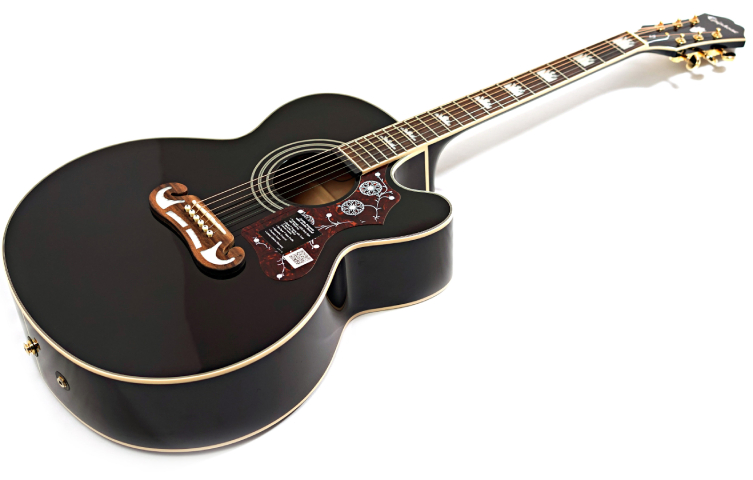
We have another stunning looking Epiphone acoustic guitar here, but how does it differ from the two we’ve looked at already? Wel, mostly it’s the size. The EJ200 is a jumbo, so it’s as big as acoustic guitars get, on a mainstream level anyway. The bigness is designed to provide maximum projection and volume, with a rich, percussive sound. Songwriters love the EJ200 because it provides a large ‘bed of sound’ for their vocals to sit on top of, plus, it looks awesome on a stage!
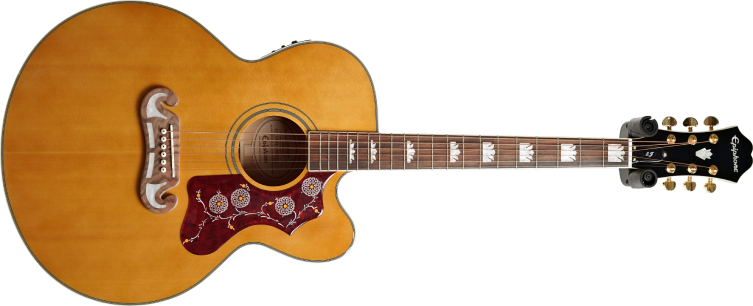
As with our words regarding the Dove and Hummingbird, the EJ200SCE is a guitar you can grow with. If the size isn’t an issue for you (play it first before you decide, you may find it’s more comfortable than you think), it’s a wonderful platform to learn on and improve. It’s a classic design with a timeless sound, so it’ll never be something you regret having around!
Best Epiphone Guitars for Beginners
Epiphone for Beginners
As you’ve found out today, Epiphone guitars are excellent choices for a number of players. Amongst them are beginners, who are well served with Epiphone’s electric and acoustic models. Easy to play, built to last, pleasant on the eye and direct from two of the guitar industry’s greatest heritage brands, an Epiphone is a most excellent choice for the beginner, intermediate and experienced guitarist alike.
Browse our Epiphone Electric Guitars





